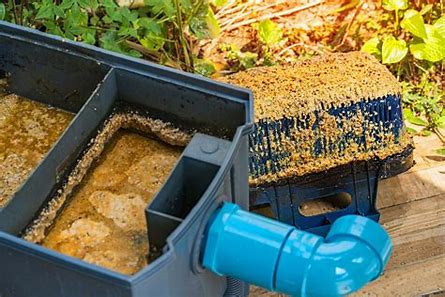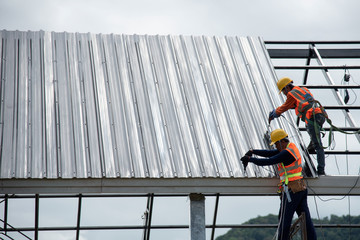Experienced excavation contractors lay the groundwork for successful construction projects. They take care of everything from clearing the site of debris to soil testing and grading.
They also know how to work safely with heavy equipment, like bobcats. This helps prevent damage to underground public utility lines that could be fatal if accidentally hit. Keep reading the article below to learn more about Excavating Contractor.
Site preparation services are the first step in construction, laying the foundation for all other building activities. They include the removal of debris, trees, and other obstacles from the construction area. Depending on the scope of the project, it may also include demolition of existing structures or buildings. This can be done manually or with specialized machinery such as wrecking balls and excavators.
Other essential site preparation services include soil stabilization, excavation and grading, and the installation of necessary utilities. These include water, sewer, electricity, and gas lines. A skilled contractor will know how to trench these underground utilities and ensure that they are properly protected and located on the construction site. This helps to avoid costly mistakes down the road and reduces the risk of future structural problems for the building’s owner.
Some excavation contractors also provide erosion control and environmental compliance services to ensure that the construction process is completed safely and in accordance with local regulations. They will also use specialized equipment to minimize the impact of construction on surrounding ecosystems. This is a crucial aspect of the excavation process, and choosing the right contractor to perform these services is a critical decision that can significantly impact the success of a construction project.
When choosing an excavation contractor near me, it is important to ask them about their experience and qualifications. Ask for referrals from other property owners or builders, and check online directories for contractor reviews. You should also look for a contractor that is licensed and insured, as this will protect you from liability in case of any damage or accidents during the project.
Finally, make sure that the contractor provides accurate estimates and is upfront about any potential issues that might affect the timeline or cost of the project. This will help to prevent unexpected delays and budget overruns.
Retaining Walls
If a property has a slope or a gully, a retaining wall is often necessary to prevent flooding and damage to the land. However, a poorly designed or constructed retaining wall could cause structural damage or even failure. Hence, it is crucial to use the services of an experienced excavation contractor for your retaining wall project.
Retaining walls need to be designed in accordance with the lateral earth pressure they are expected to resist. This pressure could be caused by backfill, soil erosion, liquid pressure or sand. The design process includes determining the function of the retaining wall, its load-bearing capacity and sliding resistance. In addition, the engineers need to consider the soil composition and determine the optimum structure type for the site conditions.
Once the foundation of a retaining wall has been determined, it is then time to construct it. An excavating contractor is able to efficiently complete the construction process due to their experience and knowledge. In addition, their specialized equipment helps them to streamline the process and complete it in a shorter amount of time. Professionals also follow strict regulations when working on a construction project. This prevents unforeseen challenges from impacting the timeline and budget of a construction project.
Choosing an excavation contractor with adequate experience is the best way to ensure that your project is completed on time and within budget. You can check online reviews or ask for referrals from other construction companies to find a contractor that meets your specific needs. Moreover, a contractor with a wide range of machinery is better equipped to handle any site condition, whether it involves land clearing or precise earth moving.
The process of backfilling is an important part of the excavation and retaining wall construction process. It is done to compact soil back into trenches and foundation areas for structural stability. During this process, initial ground levels are recorded and material is inspected and approved before it is used in the backfilling. Finally, the backfill is layered in small increments to achieve even compaction. Professionals also implement drainage channels and drainage pipes to prevent flooding and surface runoff.
Foundations
Foundations are essential to the integrity of any building, securing it from shifting or settling over time. However, foundation work is more than just digging a hole. A professional excavation contractor brings a level of expertise to this critical construction phase, helping you lay the groundwork for your new building or structure and guaranteeing that it has solid support beneath it.
The process starts well before your project actually breaks ground, with the excavating contractor analyzing the site and ensuring that it is ready for what comes next. This includes everything from identifying underground utilities to assessing the soil conditions to ensure that they can be handled safely and appropriately during the construction process.
Once your project begins, the excavation crew will begin to clear and dig the site, removing any trees, rocks, or debris that are in the way of what you are building. They will then dig a foundation hole, usually 18-24 inches deep, depending on the size of your structure. They will also grade the area to ensure proper drainage and avoid issues like water accumulation that can weaken your foundation over time.
Foundation excavation is a complicated job that requires the right machinery and skill. You want a team of experts who have experience with the type and scale of your building, as well as the location and soil conditions. For example, digging a foundation for a house is much different than that of a commercial building. The former must meet specific regulations, while the latter is often built on top of a previous foundation.
Once the foundation is dug, a concrete pour can begin. The foundation must be strong enough to hold the weight of whatever you are building on it, but that is only possible when the hole is precisely the right size and shape. It is important to hire an experienced and reputable excavation contractor, as mistakes here can be costly in both the short term and long term.
Paving
Most construction projects, from new homes to commercial roads, require excavation work. Excavating contractors handle a variety of crucial tasks that help the project progress smoothly, safely, and according to plan. They’re responsible for laying a solid foundation that supports the weight and structure of future developments, ensuring that the ground is contoured and stable, managing underground utilities, and strategically planning the site to minimize obstacles that could delay construction down the line.
They’re also responsible for paving, including driveways, walkways, parking lots, and more. They use heavy equipment like bulldozers and excavators to clear the land and level it. They also dig trenches for pipes and sewer systems, and they can also modify the landscape with land alteration and grading, such as reshaping hills or valleys. They can even correct drainage issues to prevent flooding and puddles.
Whether the job involves a new driveway or a new road, an excavating contractor will typically notify local utility providers of the work. This is important so that workers don’t accidentally hit power lines or other vital services. They can also mark the locations of any existing utility lines so that other workers are aware and do not disturb them.
A seasoned excavation contractor will be familiar with the latest safety protocols and technologies, minimizing the risk of workplace accidents and damage to surrounding structures. They’ll also have the knowledge and experience to anticipate any challenges and resolve them effectively. Using a professional excavating contractor reduces the risk of costly mistakes, saving time and money for the client.
When you need a residential or commercial paving contractor, contact Coal Creek Excavating & Septic. Their expertise can help you improve the value, curb appeal, and utility of your property. They’ll ensure your pavement is built right, resulting in long-lasting and durable concrete or asphalt. They’ll also provide expert excavating services, so you can rest assured the project will be completed on time and within budget. Contact them today to get started!



 It is important to have your grease traps/grease interceptors pumped out regularly. This will help prevent costly plumbing repairs and reduce odors.
It is important to have your grease traps/grease interceptors pumped out regularly. This will help prevent costly plumbing repairs and reduce odors.












